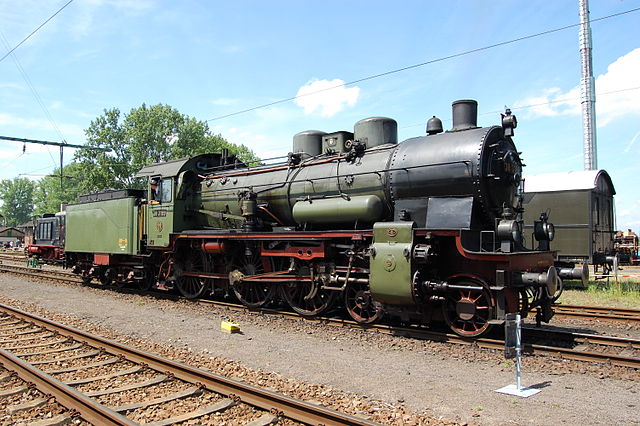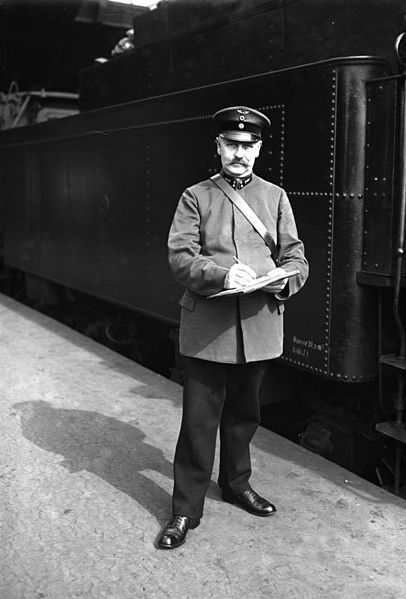The Prussian Class P 8 of the Prussian state railways was a 4-6-0 steam locomotive built from 1906 to 1923 by the Berliner Maschinenbau and twelve other German factories. The design was created by Robert Garbe. It was intended as a successor to the Prussian P 6, which was regarded as unsatisfactory.
Prussian P 8 in state railway livery
P8 driver's cab
Original Prussian P8 running on PKP (Polish State Railways) as class Ok1 in August 1976
CFR (Căile Ferate Române, Romanian Railways) 230.000 class, built in Romania, double-heading at Sălişte near Sibiu, 1972
The Deutsche Reichsbahn, also known as the German National Railway, the German State Railway, German Reich Railway, and the German Imperial Railway, was the German national railway system created after the end of World War I from the regional railways of the individual states of the German Empire. The Deutsche Reichsbahn has been described as "the largest enterprise in the capitalist world in the years between 1920 and 1932"; nevertheless, its importance "arises primarily from the fact that the Reichsbahn was at the center of events in a period of great turmoil in German history".
A DRG conductor in 1928 complete with rank insignia
1938 military ticket from Rendsburg to Königsberg (Pr.)
WWII Reichsbahn military marked railwayman's carbide burner lantern (c. 1942)
The wagon monument, Yad Vashem, Jerusalem








